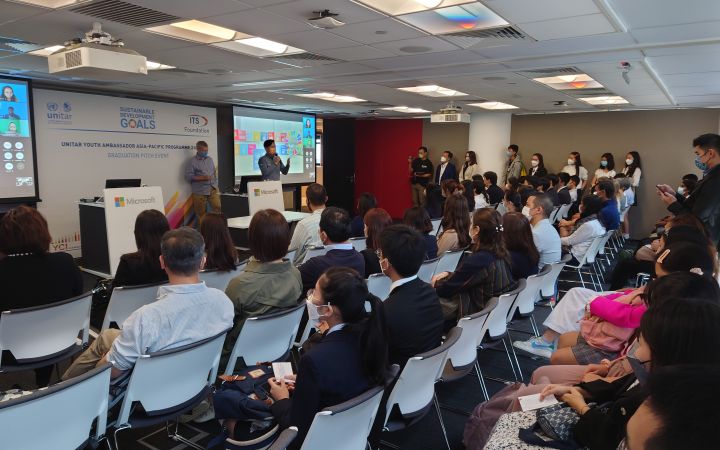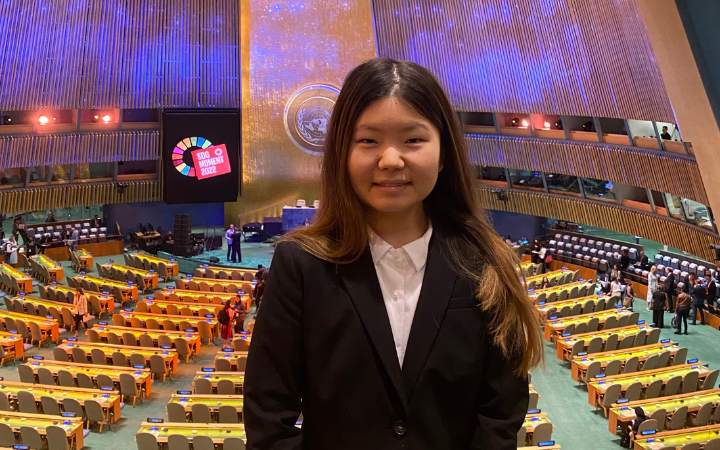is now accepting applications from interested Asia-Pacific high school students.
8 June 2023, Hiroshima, Japan - The United Nations Institute for Training and Research (UNITAR) and ITS Education invite young people to apply to the Youth Ambassador Asia Pacific Programme 2023. The programme is open to Asia-Pacific high school students (aged 14-17 years) with a passion for global affairs and wants to engage with the international community.
The programme will run online for 10 consecutive Saturdays, starting 23 September 2023. Focusing on innovation and impact to advance Agenda 2030 and the Sustainable Development Goals (SDGs), the Youth Ambassadors will join webinars and mentoring sessions with professionals in the field. The programme will culminate with final presentations of the individual capstone projects.
By the end of the programme, students will have gained insights into SDG best practices and global trends in social entrepreneurship. They will join a network of experts and common-minded peers in the Asia-Pacific region and collaborate on developing innovative solutions to global and social issues.
Message from a 2022 Youth Ambassador
Sena Chang, UNITAR Youth Ambassador 2022, describes the UNITAR programme as a great learning opportunity and a chance to connect with other passionate youth and encourage other young people to apply.
UNITAR opened my worldview on changes you can do through technology.
Despite cultural differences or political differences, there is so much optimism among youth to mobilize behind global issues and to find solidarity.
Programme and application details
Programme objectives
Through the programme, Youth Ambassadors will develop skills in
- critical thinking
- innovation
- entrepreneurship
- communication
- leadership
Selection criteria
To be selected for the programme, you must:
- be a high school student living in the Asia-Pacific region, between 14-17 years of age
- have a recommendation from your school
- have good spoken and written English skills
- be committed to completing the programme
- be passionate about success and making a positive impact on your community
Application deadline is 4 August 2023, 7 p.m. JST/6 p.m. HKT.
ABOUT UNITAR
The United Nations Institute for Training and Research (UNITAR) is a dedicated training arm of the United Nations. In 2021, UNITAR trained 370,139 learners around the world to support their actions for a better future. In addition to our headquarters in Geneva, we have offices in Hiroshima, New York, Bonn and various networks around the world.
One of the eight divisions of UNITAR, the Division for Prosperity, based in the Hiroshima Office and Geneva Headquarters, seeks to shape an inclusive, sustainable and prosperous world. World-class learning and knowledge-sharing services on entrepreneurship, leadership, finance and trade, digital technologies, and nuclear disarmament and non-proliferation are offered. We empower individuals from developing countries - especially women and young people - to address inequalities. Our alumni are making a difference in least-developed countries, countries emerging from conflict, and small-island developing states.








